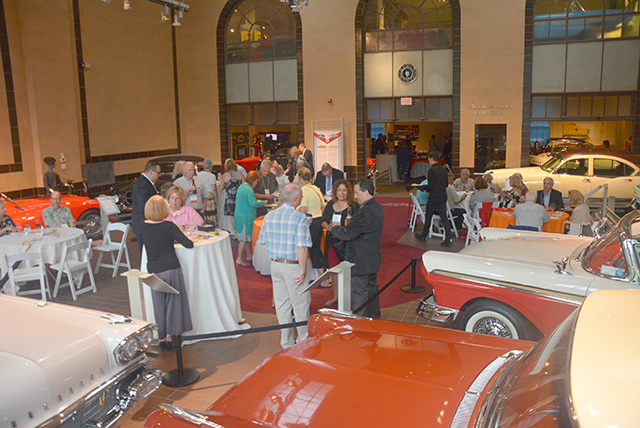This section of the SUNY Empire website is no longer being updated.
View current SUNY Empire Stories.
August 7, 2018
Alumni Event Blends Science, the Performing Arts, Teaching and Learning

This year’s annual alumni event at the Saratoga Performing Arts Center provided attendees with a blend of science, the performing arts, teaching and learning.
This year’s SPAC program featured “’The Planets’- An HD Odyssey,” a multimedia performance featuring The Philadelphia Orchestra playing “The Planets, Op. 32,” a seven-movement orchestral suite by the English composer Gustav Holst, and a movie, produced and directed by Duncan Copp, featuring images and image-based computer animations from NASA’s explorations of the planets.
For the first time at this well-attended annual event, a member of the SUNY Empire State College faculty provided remarks.
During the reception at the Saratoga Automobile Museum prior to the performance, Associate Professor Audeliz Matias, chair of the college’s Department of Natural Sciences, provided more than 130 alumni, family and friends with background on her research on impact craters, geologic structures caused by the collision of small objects with the surfaces of planets.
She said the evening at SPAC would be a display of the performing arts and science working together.
Matias has done extensive research about Mars, which also is the title of the first movement of Holst’s composition.
“The impression is that we are circling around the planet Mars,” she said. “When looking at the images, keep in mind that these are actual scientific data, acquired by different NASA missions.”
Matias, who earned her doctorate in geological sciences from Northwestern University, began her research on impact craters during her internship with NASA as a University of Puerto Rico – Mayaguez geology graduate student 20 years ago.
Since then, NASA and Matias have maintained a relationship and she has served as a project-proposal peer reviewer.
Matias has continued to study impact craters on various planetary surfaces and has served as a peer reviewer for scientific proposals looking for funding from the Solar System Workings Program of the Science Mission Directorate at NASA.
“The shape, the depth, the diameter and the exact formation around these bowl-shaped craters gives us a lot of insight about the surface of Mars,” she said. “Here on Earth, we can say ‘Hey, let’s go to the Adirondacks,’ then get a hammer, some rocks and we have the samples. We don’t have that for other planets. Just by looking at images of what actually happened at the surface, we gain insights of what lies underneath the visible surface, deep down in the planet.”
Images sent from various NASA missions to Mars were used in accompanying Copp’s film.
“Think about the images you will see with the orchestra,” said Matias. “Think about how amazing it is that we know the surface of Mars better than Earth’s. When you think about it, it makes sense. On Earth, we have vegetation and we have water covering the planet. So, remove all that, and Mars is the perfect planet to study topography.”
Copp’s film was commissioned by the Houston Symphony Orchestra, not just to enhance Holst’s composition, but also to provide a new experience.
“The Planets - An HD Odyssey” premiered in NASA’s home city in 2010.